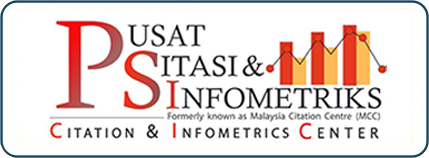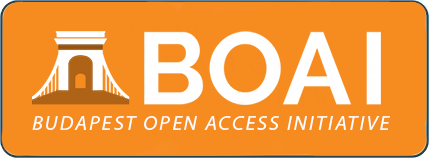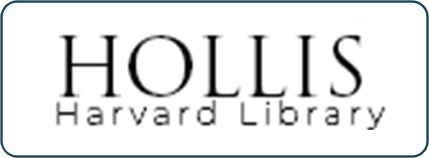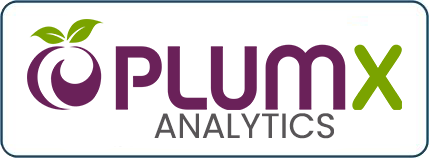The Participation of Alumni in Successful Endowment and Waqf Funds
A Study of Selected Higher Educational Institutions (HEIs) in Malaysia
DOI:
https://doi.org/10.33102/jmifr.515Keywords:
Alumni networks, Successful element, Endowment and waqf funds, Higher Educational Institutions (HEIs)Abstract
Endowment and waqf funds are essential sources of income for Higher Educational Institutions (HEIs) in many countries, including Malaysia. Identifying the elements that contribute to the success of these funds can help sustain them. The previous scholars discovered that several elements drive the success of endowment funds in HEIs; one such element is alumni networks. This was also discovered to determine successful fundraising in another study. In this regard, this study examines this element in the context of Malaysia to observe its role in determining the success of endowment and waqf funds, particularly in public universities in this country. Simultaneously, this study also investigates the factors that drive the establishment of these alumni networks. To achieve these objectives, this study adopted a qualitative approach using interviews. Several representatives from selected universities were interviewed, and the information obtained was transcribed and analyzed. It was discovered that alumni networks are essential determinants of the success of endowment and waqf funds at the selected universities. Several key factors were identified that can help build alumni networks, such as assistance from alumni associations, a positive experience while studying, and awareness of charitable giving. This study suggests that universities can emphasize these three factors to build relationships with alumni and ensure continual contributions.
Downloads
References
Amran, A. & Muhammad, J. (2015). Changes and challenges in financial autonomy, in Governance Reforms in Public Universities of Malaysia, ed. by F. Md. Taib and M. N. L. Y. Abdullah, 59–77, Pulau Pinang: Penerbit Universiti Sains Malaysia.
Bekkers, R.. & Schuyt, T. (2008). And who is your neighbor? Explaining denominational differences in charitable giving and volunteering in the Netherlands. Review of Religious Research, 50(1), 74–96. https://www.jstor.org/stable/20447529
Bekkers, R. & Wiepking, P. (2011). A literature review of empirical studies of philanthropy: Eight mechanisms that drive charitable giving. Nonprofit and Voluntary Sector Quarterly, 40(5), 924–973. https://doi.org/10.1177/0899764010380927
Brown, E. & Ferris, J. M. (2007). Social capital and philanthropy: An analysis of the impact of social capital on individual giving and volunteering. Nonprofit and Voluntary Sector Quarterly, 36(1), 85–99. https://doi.org/10.1177/0899764006293178
Bruggink, T. H. & Siddiqui, K. (1995). An econometric model of alumni giving: A case study for a liberal arts college. The American Economist, 39(2), 53–60. https://doi.org/10.1177/056943459503900206
Byun, Y.-K. (2021). Money for belongingness: The account book and the management of the communal fund of a high school alumni association in South Korea, in Infrastructure, Morality, Food and Clothing, and New Developments in Latin America (Research in Economic Anthropology), ed. by Wood, D. C., 75-96, Leeds: Emerald Publishing Limited. https://doi.org/10.1108/S0190-128120210000041004
Clotfelter, C. T. (2001). Who are the alumni donors? Giving by two generations of alumni from selective colleges. Nonprofit Management & Leadership, 12(2), 119–138. https://doi.org/10.1002/nml.12201
Clotfelter, C. T. (2003). Alumni giving to elite private colleges and universities. Economics of Education Review, 22(2), 109–120. https://doi.org/10.1016/S0272-7757(02)00028-6
Ebert, K., Axelsson, L. & Harbor, J. (2015). Opportunities and challenges for building alumni networks in Sweden: A case study of Stockholm University. Journal of Higher Education Policy and Management, 37(2), 252–262. https://doi.org/10.1080/1360080X.2015.1019117
Forrest, J., Nikodemos, L. & Gilligan, C. (2016). The experience of receiving scholarship aid and its effect on future giving: A listening guide analysis. Qualitative Research in Psychology, 13(1), 47–66. https://doi.org/10.1080/14780887.2015.1106628
Freeland, R. E., Spenner, K. I. & McCalmon, G. (2015). I gave at the campus: Exploring student giving and its link to young alumni donations after graduation. Nonprofit and Voluntary Sector Quarterly, 44(4), 755–774. https://doi.org/10.1177/0899764014529625
Gaier, S. (2005). Alumni satisfaction with their undergraduate academic experience and the impact on alumni giving and participation. International Journal of Educational Advancement, 5(4), 279–288. https://doi.org/10.1057/palgrave.ijea.2140220
Gallo, M. L. (2018). How are graduates and alumni featured in university strategic plans? Lessons from Ireland. Perspectives: Policy and Practice in Higher Education, 22(3), 92–97. https://doi.org/10.1080/13603108.2017.1397065
Graneheim, U. H. & Lundman, B. (2004). Qualitative content analysis in nursing research: Concepts, procedures and measures to achieve trustworthiness. Nurse Education Today, 24(2), 105–112. https://doi.org/10.1016/j.nedt.2003.10.001
Hanson, S. K. (2000). Alumni characteristic that predict promoting and donating to alma mater: Implications for alumni relations. PhD Dissertation, University of North Dakota.
Hasbullah, N. A. & Ab Rahman, A. (2021). Endowment and waqf funds in Malaysian higher education: A conceptual study. Jurnal Syariah, 29(1), 127-154. https://doi.org/10.22452/js.vol29no1.6.
Holmes, J. (2009). Prestige, charitable deductions and other determinants of alumni giving: Evidence from a highly selective liberal arts college. Economics of Education Review, 28(1), 18–28. https://doi.org/10.1016/j.econedurev.2007.10.008
Iskhakova, L., Hilbert, A. & Hoffmann, S. (2016). An integrative model of alumni loyalty — An empirical validation among graduates from German and Russian universities. Journal of Nonprofit & Public Sector Marketing, 28(2), 129–163. https://doi.org/10.1080/10495142.2015.1006490
Johnstone, D. B. (2006). Financing Higher Education: Cost-Sharing in International Perspective. The Netherlands: Sense Publishers. https://doi.org/10.1163/9789087900939
Council for Advancement and Support of Education (CASE). (2020). Voluntary Support of Education. London, Mexico City, Singapore & Washington, D.C.
Koenig-lewis, N., Asaad, Y., Palmer, A. & Petersone, E. (2016). The effects of passage of time on alumni recall of ‘student experience’. Higher Education Quarterly, 70(1), 59–80. https://doi.org/10.1111/hequ.12063
Krippendorff, K. (2004). Content Analysis: An Introduction to Its Methodology (2nd ed.). Thousand Oaks, London & New Delhi: Sage Publications.
Lerner, J., Schoar, A. & Wang, J. (2008). Secrets of the academy: The drivers of university endowment success. Journal of Economic Perspectives, 22(3), 207–222. https://doi.org/10.1257/jep.22.3.207
McNamee III, M. (2021). Alumni engagement and identity: A case study on beliefs and behaviors. Philanthropy & Education, 4(2), 25-50. https://doi.org/10.2979/phileduc.4.2.02
Mahamood, S. M., Ab Rahman, A. & Che Seman, A. (2018a). Pembentukan institusi pengajian tinggi berteraskan wakaf di Malaysia: Cadangan model pelaksanaannya. Jurnal Syariah, 26(1), 1–22. https://doi.org/10.22452/js.vol26no1.1
Mahamood, S. M., Ab. Rahman, A. & Che Seman, A. (2018b). Cabaran pelaksanaan wakaf universiti awam di Malaysia: Suatu analisis menurut perundangan di Malaysia. Kanun, 30(2), 383–409. http://jurnal.dbp.my/index.php/Kanun/article/view/2960
Marr, K. A., Mullin, C. H. & Siegfried, J. J. (2005). Undergraduate financial aid and subsequent alumni giving behavior. The Quarterly Review of Economics and Finance, 45(1), 123–143. https://doi.org/10.1016/j.qref.2003.08.005
Maykut, P. & Morehouse, R. (1994). Beginning Qualitative Research: A Philosophic and Practical Guide. London & Washington, D.C.: The Falmer Press.
Mazambani, G., Reysen, S., Gibson, S. & Hendricks, L. (2017). Socio-structural intergroup characteristics as predictors of intention to join university alumni association. World Journal of Social Sciences, 4(2), 42–51. https://doi.org/10.5430/wjss.v4n2p42
McDearmon, J. T. & Shirley, K. (2009). Characteristics and institutional factors related to young alumni donors and non-donors. International Journal of Educational Advancement, 9(2), 83–95. https://doi.org/10.1057/ijea.2009.29
Meer, J. & Rosen, H. S. (2012). Does generosity beget generosity? Alumni giving and undergraduate financial aid. Economics of Education Review, 31(6), 890–907. https://doi.org/10.1016/j.econedurev.2012.06.009
Monks, J. (2003). Patterns of giving to one’s alma mater among young graduates from selective institutions. Economics of Education Review, 22(2), 121–130. https://doi.org/10.1016/S0272-7757(02)00036-5
Naeimah Saraeh, U., Abdul Rahman, N. I., Noordin, N., Ramlan, N. S., Ahmad, R. & Sakdan, M. F. (2018). The influence of students’ experience on alumni giving in Malaysian public educational institution, in Malaysia Technical Universities Conference on Engineering and Technology (MUCET 2017), 150, 1–6, EDP Sciences. https://doi.org/10.1051/matecconf/201815005030
Newman, M. D. & Petrosko, J. M. (2011). Predictors of alumni association membership. Research in Higher Education, 52(7), 738–759. https://doi.org/10.1007/s11162-011-9213-8
Panduan Pengurusan Wakaf Institusi Pendidikan. (2018). Putrajaya: Jabatan Wakaf, Zakat dan Haji (JAWHAR).
Pérez-Esparrells, C. & Torre, E. M. (2012). The challenge of fundraising in universities in Europe. International Journal of Higher Education, 1(2), 55–66. https://doi.org/10.5430/ijhe.v1n2p55
Rubin, H. J., & Rubin, I. S. (2012). Qualitative Interviewing: The Art of Hearing Data (3rd ed.). Thousand Oaks: SAGE Publications, Inc.
Schlegelmilch, B. B. (1988). Targeting of fund-raising appeals - How to identify donors. European Journal of Marketing, 22(1), 31–40. https://doi.org/10.1108/EUM0000000005265
Skari, L. A. (2014). Community college alumni: Predicting who gives. Community College Review, 42(1), 23–40. https://doi.org/10.1177/0091552113510172
Snipes, R. L. & Oswald, S. L. (2010). Charitable giving to not-for-profit organizations: Factors affecting donations to non-profit organizations. Innovative Marketing, 6(1), 73–80.
Sun, X., Hoffman, S. C. & Grady, M. L. (2007). A multivariate causal model of alumni giving : Implications for alumni fundraisers. International Journal of Educational Advancement, 7(4), 307–32. https://doi.org/10.1057/palgrave.ijea.2150073
The University Transformation Programme (UniTP) Purple Book: Enhanching University Income Generation, Endowment & Waqf. (2016). Putrajaya: Kementerian Pendidikan Tinggi Malaysia.
Tsao, J. C. & Coll, G. (2004). To give or not to give: Factors determining alumni intent to make donations as a PR outcome. Journalism & Mass Communication Educator, 59(4), 381–392. https://doi.org/10.1177/107769580405900407
Usman, M. & Ab Rahman, A. (2023). Funding higher education through waqf: A lesson from Malaysia. International Journal of Ethics and Systems, 39(1), 107-125. http://dx.doi.org/10.1108/IJOES-12-2021-0217.
Vidal, D. D. & Pittz, T. G. (2018). Educating beyond the classroom: Alumni giving and the value of campus culture, Studies in Higher Education, 1–15. https://doi.org/10.1080/03075079.2018.1482269
Wallace, C. R. (2012). Afican-American alumni perceptions and motivations toward philanthropic giving (a case study of an African-American Alumni Council at a Midwesten University). Master Thesis, Indiana State University.
Wang, L. & Graddy, E. (2008). Social capital, volunteering, and charitable giving. Voluntas, 19, 23–42. https://doi.org/10.1007/s11266-008-9055-y
Wang, Y. (2018). What influences alumni donations? Journal of Economics, Business and Management, 6(4), 160–63. https://doi.org/10.18178/joebm.2018.6.4.567
Weerts, D. J. & Ronca, J. M. (2007). Profiles of supportive alumni: Donors, volunteers, and those who ‘do it all’. International Journal of Educational Advancement, 7(1), 20–34. https://doi.org/10.1057/palgrave.ijea.2150044
———. (2009). Using classification trees to predict alumni giving for higher education. Education Economics, 17(1), 95–122. https://doi.org/10.1080/09645290801976985
Yaqoob Arab, S. H. & Zakariyah, H. (2023). Waqf funds for higher education in Malaysia and Bahrain: Drawing lessons from the experience. Milkiyah: Jurnal Hukum Ekonomi Syariah, 2(2), 105-114. https://doi.org/10.46870/milkiyah.v2i2.659.
Zhimin, L., Chunlian, C. & Xian, W. (2016). Alumni relations in Chinese HEIs: Case studies of three major universities. Front. Educ. China, 11(1), 74–101. https://doi.org/10.3868/s110-005-016-0004-8
Downloads
Published
How to Cite
Issue
Section
License
Copyright (c) 2024 Nurul Adilah Hasbullah, Asmak Ab Rahman

This work is licensed under a Creative Commons Attribution 4.0 International License.















